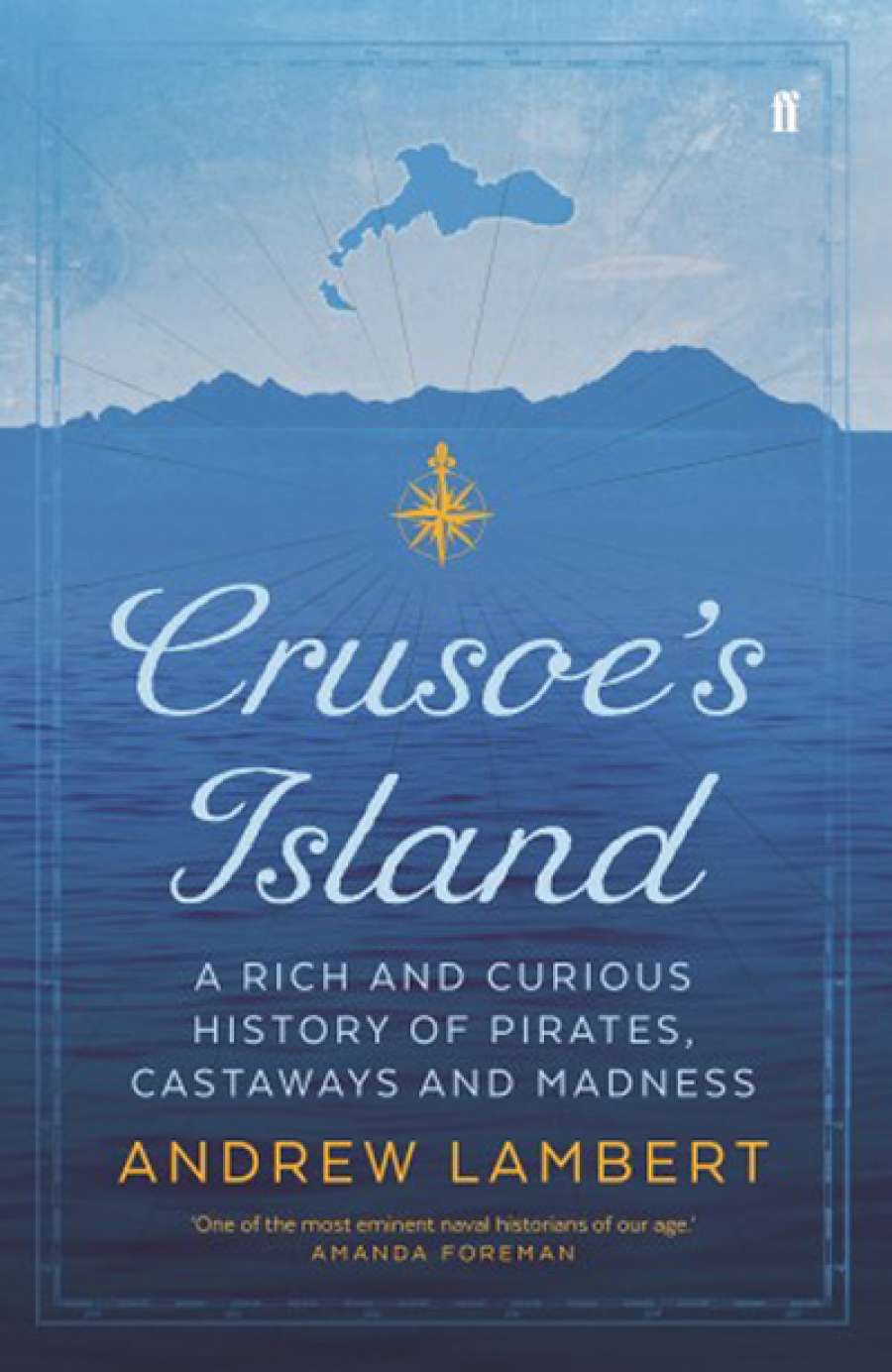
- Free Article: No
- Contents Category: History
- Custom Article Title: Danielle Clode reviews 'Crusoe’s Island: A rich and curious history of pirates, castaways and madness' by Andrew Lambert
- Book 1 Title: Crusoe’s Island
- Book 1 Subtitle: rich and curious history of pirates, castaways and madness
- Book 1 Biblio: Faber $39.99 hb, 319 pp, 9780571330232
I recall one conversation with a publisher about a proposed book title that did not accurately reflect the contents of a book. This did not matter, she said dismissively, so long as the title made readers buy the book. Crusoe’s Island perfectly illustrates that conundrum. This book is not about the fictional Crusoe’s island (nominally located in the Caribbean off Trinidad and Tobago), but the island on which Alexander Selkirk was actually marooned – one of the Juan Fernández group, off the Pacific coast of Chile 11,000 kilometres due east of Sydney. Nor is it particularly a history of pirates, castaways, and madness, although all three make telling appearances. In fact, this book is a history of British (and predominantly naval) engagement with the Juan Fernández islands, both fictive and real from its discovery to the present day.
Chronology is a compelling structure for a historian, but it does not always make a compelling story for a reader. That said, the component chapters of this book often present fascinating stories in themselves, which might have been more effectively constructed as distinct essays with their own thematic narrative structure. This might also have allowed the chapters on literary analysis of various fictional representations of the Juan Fernández islands, and the fascinating accounts of madness apparently caused by scurvy and ‘calenture’, more scope for detailed analysis and investigation. Despite that, as one would expect from the author, who is Professor of Naval History at King’s College, London, there remains much to interest the British naval history enthusiast in this book.
Given the broadly European, even global, nature of exploration, this sharply British focus is somewhat incongruous. Other nations, particularly the Spanish, do rate a mention, but only in a rather cursory manner. As an example, Lambert dismisses Louis de Bougainville’s highly successful and influential Pacific expedition as simply an ‘attempt to pre-empt them [the British] at the Falkland Islands – gateway to the South Pacific’. Bougainville lost only seven of his 330 men over the three-year journey, inspired European imagination with idealised images of Pacific culture, and almost certainly accelerated Britain’s own Pacific exploration ambitions, all of which could have substantially contributed to the central themes in Lambert’s book. The book concludes with a rather puzzling Brexit-like rant against the ‘falsifying’ of history. ‘Modern Britons are profoundly ignorant of their imperial past,’ Lambert claims, ‘having been systematically been fed a very different identity, one of Continental origin. The search for a European origin has distorted the past.’ For Australians, who may feel that they were systematically fed a British imperial version of history to the exclusion of other cultures, this does feel a little like the pot calling the kettle black.
 A map of Isla Más a Tierra (known today as Robinson Crusoe), the largest of the three islands that constitute the Juan Fernández group, Jacques Nicolas Bellin, 1703–72. (Wikimedia Commons)
A map of Isla Más a Tierra (known today as Robinson Crusoe), the largest of the three islands that constitute the Juan Fernández group, Jacques Nicolas Bellin, 1703–72. (Wikimedia Commons)
Lambert has a curious tendency to take hearsay at face value. The accounts of the ‘old man’ Joshua Slocum (who, at fifty-one, was younger than the author himself) are marked by a flippant reference to raping a minor, an incident which is neither relevant nor particularly accurate. The achievements of Dampier, the ‘old buccaneer’, are dismissed on the basis of his colleagues’ condemnation. Lambert exhibits little tolerance for privateers. Many a capable captain’s achievement has been trashed by scuttlebutt and gossip (Baudin being a well-known example). Notwithstanding his fellow officers’ views, Dampier was the first man to circumnavigate the globe three times. Just surviving that feat was a rare achievement at the time.
The story of a small, strategically placed island, regularly visited by foreigners, with an inflated sense of importance derived from a quasi-fictitious history, might be seen as metaphor for British history. But this is a book about the power of stories, their power to shape imagination, to drive ambition, and even to sustain empires. Our accepted view of history is very much dependent on the ability of the victor to tell a compelling story. Lambert’s book is both an analysis, and a striking example, of just that process in action.


Comments powered by CComment